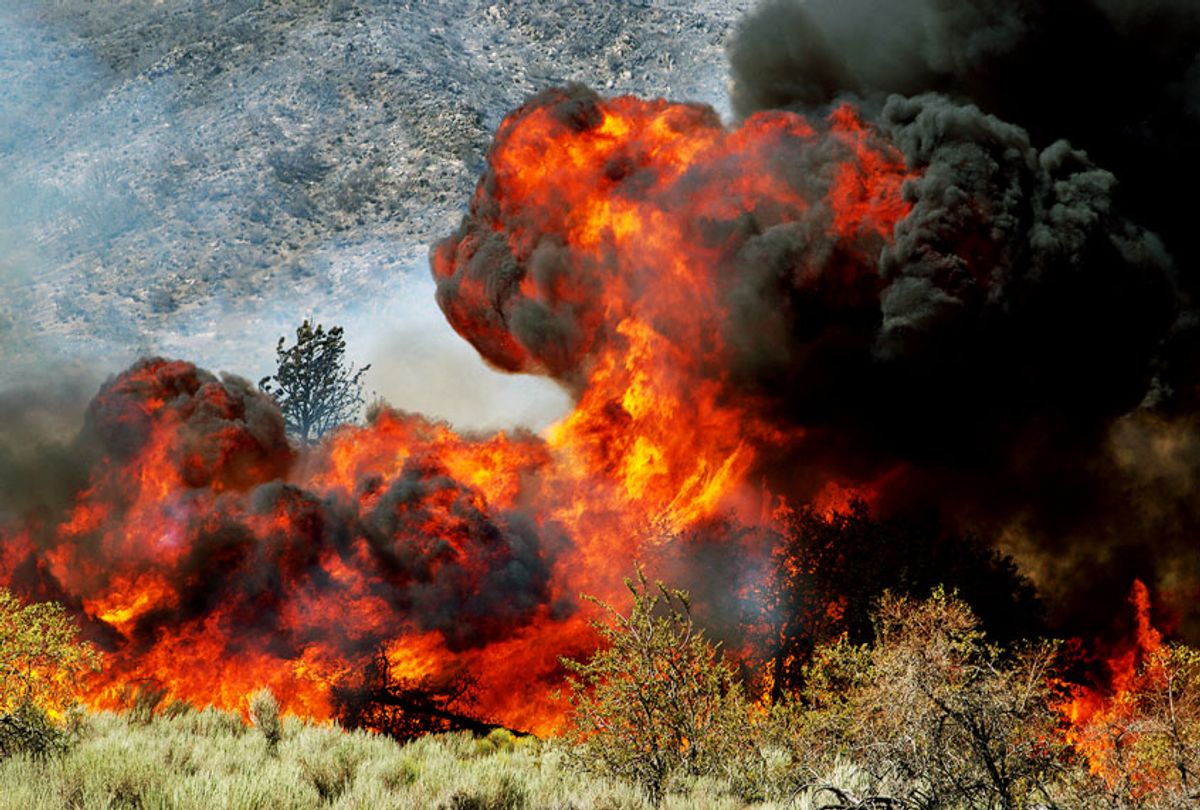As it responded to the wildfires sweeping through California, Natural gas company Pacific Gas and Electric said that two fires which broke out in Lafayette, a town located less than 20 miles from San Francisco, could have been caused by their own electrical malfunctions.
“If we did go into a mode where we wanted to prevent everything from happening, then we'd have to shut the whole system down — and that's just not acceptable," PG&E President and CEO Andy Vesey told CBS News.
California Governor Gavin Newsom responded to PG&E's statement, as well as the fact that it had shut off power for 23,000 customers without notification. Five-hundred of those who were impacted had medical conditions.
"We're going to investigate all of this," Newsom said, "and we're going to make a determination as to culpability."
A number of fires have devastated California in recent days. The Kincade fire has impacted the area of California north of San Francisco. Winds at times surpassed 70 miles per hour, while gusts reached 100 miles per hour, causing the blaze to nearly double in size between Sunday morning and Sunday afternoon. By Tuesday morning, it had grown to 75,415 acres and was only 15 percent contained.
Los Angeles Mayor Eric Garcetti said Tuesday morning that the Getty fire had burned 656 acres in west Los Angeles and was only 5 percent contained, according to the New York Times. Because the situation was not worse, he expressed optimism.
Los Angeles’ west side was ordered evacuated on early Monday morning as firefighters began to contain the wildfire there, which had surpassed 4,600 acres. Overall ,there were 16 wildfires in California as of Monday morning, according to CNN: the Burris fire, the Caples fire, the Getty fire, the Kincaid fire, the Saddle Ridge fire, the Sawday fire, the Sky fire, the Taboose fire, the Tick fire and the Old Water fire.
“As a loyal Cal alum, it is heartbreaking to see my campus and the East Bay now experiencing the expanding threat of wildfires in California,” Michael E. Mann, the American climatologist and geophysicist who currently serves as director of the Earth System Science Center at Pennsylvania State University, told Salon by email. “Each one of us has a moment where climate change really hits home for us. This is one of those moments for me.”
He added, “I called this place home for five years. Climate change impacts are no longer subtle. They are impacting all of us today — where we live, people we know. We must act now.”
Kevin Trenberth, a distinguished senior scientist in the climate analysis section at the National Center for Atmospheric Research at the University Corporation for Atmospheric Research, told Salon by email that “the increases in carbon dioxide and other greenhouse gases by human activities create extra heating. While it is small on a daily basis, it is always in the same direction. And in dry conditions it accumulates so that plants dry out faster, and wilt and wild fire risk increases on the time scale of a month."
At the same time Trenberth noted that this was a physical argument — not one based on statistics. His views were echoed by Rep. Alexandria Ocasio-Cortez, D-N.Y., who tweeted Monday morning that “this is what climate change looks like. The GOP like to mock scientific warnings about climate change as exaggeration. But just look around: it’s already starting.”
She added, “We have 10 years to cut carbon emissions in half. If we don’t, scenes like this can get much worse.”

Shares